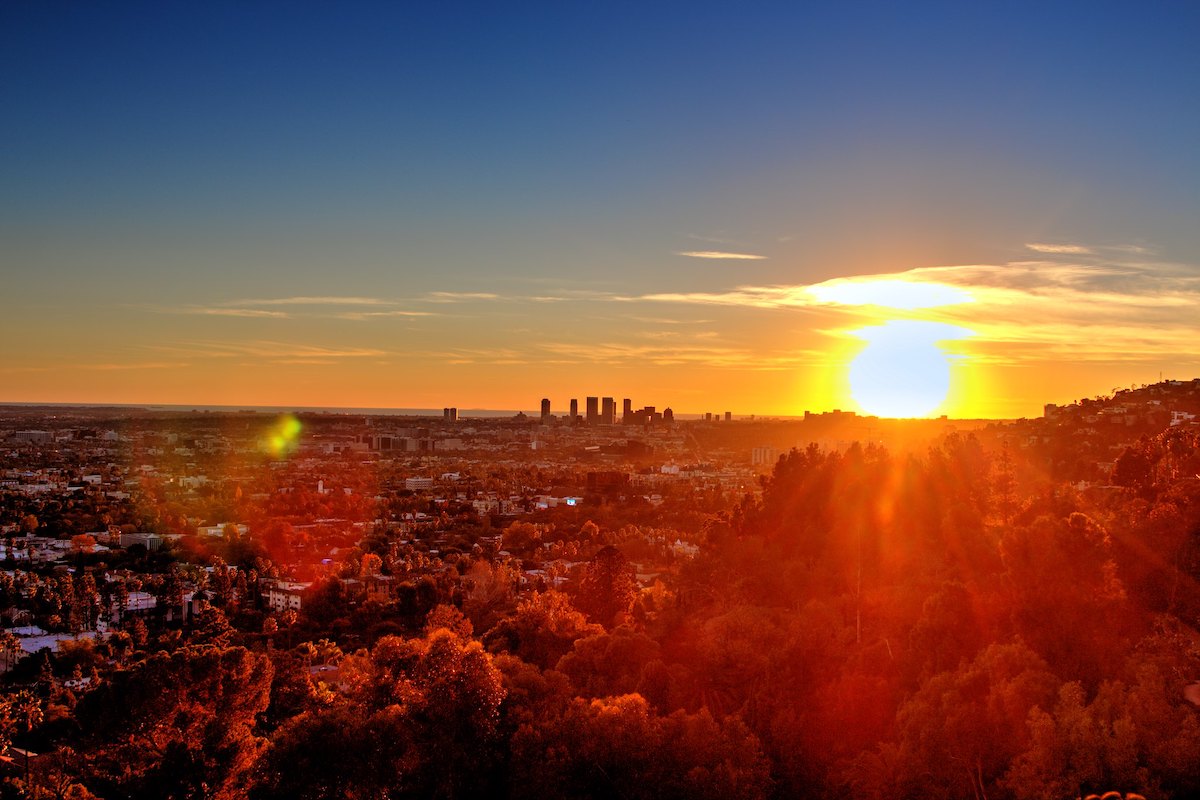The city of Los Angeles, mindful of the disproportionate toll extreme heat takes on its communities of color and low-income residents, on May 24 kicked off its Heat Relief 4 LA campaign.
Heat season generally runs from June through October, so, anticipating that and getting a jump on National Heat Awareness Day two days later, a webinar hosted by Los Angeles’ Climate Emergency Mobilization Office (CEMO) highlighted some of the ways the city is trying to mitigate heat’s impact and offered some resources for minimizing risks.
“We’re going to set an example,” CEMO director Marta Segura said following introductory welcoming remarks from Mayor Karen Bass, “by investing first and foremost in areas that have been left behind.” Programs in the works include adding cooling spots, greenscaping and public awareness campaigns.
“We need to prepare and plan ahead for our families and neighborhoods,” Segura said, and warned that the season’s first extreme heat event is the most dangerous.
In Los Angeles, extreme heat is the climate’s leading cause of hospitalizations and fatalities, with 10% to 30% increased mortality recorded on days when temperatures run above 85 degrees.
And because heat causes air pollution to stagnate, people in polluted areas already struggling with chronic illnesses are particularly vulnerable.
“Extreme heat is the primary climate hazard for L.A.,” CEMO’s Climate4LA program website says. “Hotter, longer heat waves caused by climate change, that now extend to mid-November, are one of the greatest threats to public health and habitability. Extreme heat is sending more people to the hospital, and causing more deaths, than any other climate hazard in Los Angeles.”
“While the hazards of heat waves affect everyone, extreme heat has a disproportionate impact on low-income residents and communities of color, who face the greatest vulnerability to extreme heat-related illness and death due to the cumulative burdens of pre-existing health conditions, excessive air pollution, and seasonal smoke.”
“These are preventable deaths and hospitalizations.”
“It’s clear that there’s a moral imperative,” for the city to help protect its people, Paul Krekorian, CIty Council president, said at the event.
“Marginalized and historically redlined communities are hotter than (those that are) more privileged,” concurred Susanma Reyes, of the Board of Public Works.
Besides those battling chronic illnesses such as asthma, heart disease or diabetes, people who work or are otherwise active outdoors are more vulnerable to extreme heat, along with infants, pregnant women, elders and children.
Besides forming CEMO itself, which Krekorian said is the first agency of its kind in the country, or one of them, the city has undertaken a variety of long-term projects to counter extreme heat.
Already available is a growing online guide to where specific cooling centers, pools, splash pads, hydration stations and shade structures are located throughout Los Angeles, along with less traditional, more informal cooling centers such as libraries, senior centers and recreation centers.
Longer term, the city is also working on initiatives to counter “heat island” effects, for instance, by planting more shade trees and, so far, 5.6 miles of “cool pavement” and shade shelters at bus stops.
“Cool pavement” involves using alternative paints and surfacing materials that can reduce ground temperatures 10 degrees from asphalt surfaces. The city is utilizing heat index and heat island data to identify where its efforts are needed most.
Western San Fernando Valley’s Winnetka neighborhood was an early target, with 11 blocks of Guard Top Cool Seal applied and 60 shade trees planted in 2019.
Here and in establishing shade tree canopies, Reyes said, the effort is “very methodical” in identifying areas of greatest need, focusing on transit hubs, for instance, and prioritizing providing shelter at the bus routes that have the longest wait times. Other factors to be considered are proximity to schools and business districts, “to find where people would be walking most.”
A current goal for the bus shelter initiative is to provide shelter for at least 75% of all transit boardings in each council district, Segura said, adding that the city expects funding for some of these projects from the federal infrastructure legislation enacted last year.
The Extreme Heat campaign also wants people to take care to protect themselves against the expected heat, by staying hydrated, staying out of direct sunlight and wearing light clothing, and knowing the signs of heat stroke and heat exhaustion, “so you can call for help if you need it,” Segura said.
Earlier this month the World Meteorological Association published a report warning the next five years would be the hottest on record.
“We are expecting some of the hottest heat extremes this year and in the next five years,” Segura noted.
Image via Flickr




